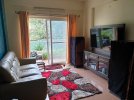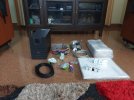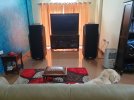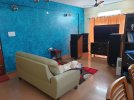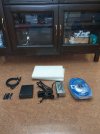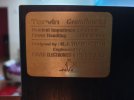sandeepsasi
Well-Known Member
The Beginning
I have always been attracted to the sheer size and room presence of large, vintage-looking speakers. Shortly after we acquired our system (a log of our journey can be read here), I began reading up on these kind of speakers. In the process I learnt about Hofmann’s Iron Laws of speaker design, high-efficiency speakers and horn systems. The more I researched about them and the more I learnt about their strengths, the more I wanted to have them. It was not that our existing system was not good. It was just a desire to own and experience something different and unconventional by today’s standards.
Since our existing system was Torvin make, the natural course of action was to go back to them. At that time, Torvin had only one model in their portfolio, The Project 1, (which has briefly come up during discussions on the forum) - a pair of large 2-way speakers based on 18” woofers mated to horn-loaded compression drivers. I only made a brief enquiry about them, back then. Those are too huge to even physically accommodate in our listening space.
Shortly after posting the thread about our system, I received a few messages asking, “Why Torvin?” I shall try to answer that here for the benefit of a larger audience. This is because, I also look at things beyond sound. I also look at sound-for-pound (or price-to-performance) and quality for the price.
Note: What I’m going to state below is just based on my understanding and assumes a buyer in India. By all means, please feel free to disagree or look at the flipside of things that I’ll have overlooked.
When we break down the cost of procuring a hi-fi system or a component from a famous brand having presence across countries, in addition to engineering and manufacturing costs, we are also indirectly paying for various other operating costs of the company like ads in websites and magazines, setting-up showrooms in cities, attending trade shows, etc and of course profits. Many a time, the cost advantages these brands enjoy from large volumes and cheaper and more efficient manufacturing do not get passed on to end customers. When these products are brought to India, customs duty and taxes are levied. Finally, these products are sold by distributers and dealers operating on fat margins (as always, there are exceptions). I don’t mind paying for good engineering, hardware, craftsmanship, packaging, transport, taxes at reasonable rates, and of course a fair premium to the manufacturer; but, not for anything else.
There are inherent advantages of buying directly from boutique brands based in India – they have low operating costs and we have to deal with few middle-men – the customs being one, distributors and dealers being another. Torvin looks like a boutique brand to me, so I went to Torvin. Another advantage is that we get to work closely with designers and craftsmen and even get products tuned and customized to our liking. Moreover, warranty and service won’t usually be a concern.
But not everything will be all sunshine and rainbows. Products from indigenous boutique brands have less to no resale value. Fit and finish can sometimes be a hit-or-miss. All information about their products may not be readily available online and we hardly come across any professional reviews of their products. These brands may have no websites or if at all they have one, the info may not be updated regularly. Auditioning of their products may be possible only in their home cities. They may not have a process in place for all aspects of operations and things in general may not look well organized. There may only be one or two key folks running the show and their momentary absence is enough for everything to come to a standstill.
Another speaker model I considered was Horn Grande (the ported bass cabinet version) made by Lyrita Audio. I had a brief interaction with Viren Bakshi (FM @viren bakhshi ) of Lyrita over e-mail and he insisted that more than a particular kind of speaker, the amp-speaker synergy will play a greater role in deciding how the system would perform. Lyrita horns work well with their tube-based amps and it will be difficult for us to host tube amps in our A/V cabinet at home. I also have concerns about these speakers sounding coherent at the listening spot, given our short listening distance and large horns they come with.
Project 1 and Horn Grande being out of the picture, I thought I’d take things one step further this time. Instead of buying from a boutique brand, I could either design one myself or pick a proven design and get it built. My intent was not to save cost here but to get even better speakers for the money. I am an electronics engineer with no intention to pursue speaker design as a hobby. I knew it’d take several years and builds to get a proper sounding pair. The former option was struck down immediately and I decided to pursue the latter idea.
Thus began my hunt for a well-documented, high-efficiency design, with all parts readily available. After a lot of search online, I landed on Troels Gravesen’s (TG’s) homepage. He has well-documented builds of various kinds of speakers. Out of these, one design that picked my interest was the Faital 3-Way Classic (Faital 3WC-12) - a high-efficiency 3-way design based on 12” Faital Pro woofers and 6” Faital Pro mid-range drivers (only the version based on 12” woofers existed at that time; now there are versions based on 10” and 15” woofers as well). It had everything I was looking for except for horn-loaded transducers for HF; instead, it had tweeters. For tweeters, there are two choices – fabric-dome tweeters from Scanspeak or Beryllium (Be) tweeters from SB Acoustics. There are also multiple levels of build, Level 1 being the most expensive as it uses crossover parts of the highest quality from Jantzen Audio, Denmark. I started exchanging e-mails with TG with questions about the build. I was surprised by the fact that he responds within a day or two, with answers that are precise and concise. Though he recommended to go for the Be version, I decided to stick to the fabric-dome version at that time as it seemed to give more bang for the buck. I also discussed with a few people on diyaudio.com who have built these speakers and they had nothing but praise for them.
Next big task was to estimate the total project cost. TG doesn’t disclose the crossover values on his website. Instead he publishes price-lists for each combination of version and level of his builds. For the combination we have chosen, we have to purchase the crossover kit from Jantzen Audio and crossover values will be disclosed in the kit. As for the cost, we also need to factor in shipping and customs charges. For the Faital 3WC-12 build, woofers and midrange drives will have to be purchased separately. Tweeters can optionally be purchased from Jantzen Audio as a part of the kit. Faital Pro has dealers in Delhi and Chennai. I got a quote for the cost of drivers from the Delhi dealer. Only unknowns at that time were the cost of raw materials, labor, final packing and shipping charges. I threw in reasonable estimates and there I was already looking at a fat budget. I immediately added this project to my short-term financial goals and started saving for the same. Based on my estimate and saving rate back then, and assuming an annual inflation of 10%, the goal seemed to be at least 4-5 years away.
Next, I needed a partner to carry out the build. Though it looked like a five year plan, I always like to knock-off the unknowns quickly and I believe in planning things well in advance. To handle a premium build like this, I would trust no one but the legendary speaker designer and builder, Sadik (FM @sadik ). I sent him a private message about the plan and he was quick to respond with a well tabulated break-up of the costs involved, for parts and labor. The cost was more or less in the ballpark of my estimate. And thus began the long wait for the corpus to grow to the desired size.
In the meantime, a new line of audiophile speakers from Torvin surfaced on their social media pages, to mark their 39th year in the field. I was particularly attracted towards one model – Grandiose – a pair of high-efficiency 3-way towers based on 15” woofers, dual mid-range drivers and horn-loaded compression drivers. I made a casual enquiry about the model but Faital 3WC-12 had already won my heart.
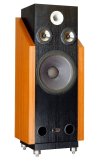
The Prodigal Son
The year 2020 had different plans for many of us.
Covid-19 outbreak happened.
Since the Faital 3WC-12 project was a non-critical financial goal of mine, I was taking advantage of the equity market swings, hoping to reach the goal faster (my style is to stay away from equity for critical financial goals which are less than 10 years away; I find it hard to manage the risk, otherwise). In 2020, I witnessed the equity market fall by 35% and then recover with vengeance. While most of our plans had to be called off during this year, the stock market had me covered on this one. The bull run which started back then still continues to this day, unabated (as I write this). Thus the project would be turning into reality sooner than expected.
In the meantime, the Faital Pro factory in Italy shut down and Faital Pro drivers went out of stock everywhere. The dealer in Delhi had no idea when he’d be in a position to accept new orders.
My mind started swaying between the fabric-dome version and the Be version of the Faital 3WC-12. Projects like this don’t happen often and my heart was craving to go for the best, given the time and effort spent. I consulted with Sadik and his recommendation for Be tweeters was only enough for me to swing towards the Be version (this will automatically select Level 1 build). And, up went the project cost. Considering customs charges, I realized that it would be cheaper to purchase the Be tweeters from audiofy.in website. This particular model had been out of stock on audiofy.in for a long time (I had never seen these in stock there in the first place).
As on the government’s part, the import duty shot up from ~45% to ~75%, increasing the project cost further.
I had been going through TG’s website to collect as much details about the build as I could. Everything he does, however inconsequential it may appear at first, seems to have a rationale behind it. All info cannot be gathered from a single thread on a particular build. Bits and pieces have to be collected from multiple build threads and then put together. There are also invaluable technical write-ups on many related topics. I created a Word doc to consolidate all info, both as pics and literature, so that I can finally present a concise description to Sadik, before starting the build. The doc was already running into more than 50 pages. I am not sure whether this level of attention to detail is really necessary, or whether it would even make any audible difference to me. My paranoia was keeping me up late into the night. Making notes. Updating the budget. Modifying the plan and timelines. Soon, my wife started to get worried.
Meanwhile, my in-laws informed us that they would be finishing their new house the following year. I thought we can make use of this opportunity to gift them a hi-fi system. Speakers we had then, Torvin Euphonious, would be a good candidate for their listening space. Moreover, I wasn’t really interested in parting with Euphonious for sentimental reasons.
Also, during this period, the responsibilities at work sky-rocketed. Working from home was a whole new experience for many of us. I got busier, and realized that I’d be having less time to spare to oversee the project.
Ultimately, I started to get a feeling that with so much uncertainty around the availability of drivers, with the level of details that were overwhelming (in spite of the fact that most of the heavy lifting would be done by Sadik) and with the amount of time and effort needed in coordinating activities, I may not be able to carry the Faital 3WC-12 project forward. Also, after the increase in customs duty and the shift towards the Be version, I felt that Faital 3WC-12 was gradually losing on the sound-for-pound side.
Meanwhile, more pics and videos of Grandiose emerged on Torvin’s social media pages. One day, I gave into the temptation and made an enquiry, a formal one this time, about the prevailing price and technical specs. With the rise in costs of import and manpower, I was expecting a stratospheric quote from them. Surprisingly, after a bit of discussion, they agreed on a price that seemed quite acceptable to me. It could have been the pressure on their business after the pandemic because I have never been good at price negotiations. I also learnt that they had a couple of orders for this model, back in 2019, which later got cancelled after the onset of Covid-19. However, they had already imported drivers and a few components to fulfil these orders, and this must make the next couple of orders for this model immune to the rise in import duty to some extent.
For technical info, I started interacting with M. John Thankachan (MJT) or Thankachan Sir as I fondly call him, the chief designer at and whose brainchild is Torvin. He is a soft-spoken, mild-mannered gentleman whose humbleness overshadows his technical prowess, vast knowledge, and experience in the audio field.
Grandiose (or Grandiose 15.3 to be specific) is a pair of high-efficiency 3-way towers based on 15” Electro-Voice woofers, 5.25” Peerless dual mid-range drivers and 1” Faital Pro compression drivers (CDs). CDs are horn-loaded and the horns made of solid Aluminium have been custom designed by Torvin. These speakers make use of bass reflex design and have dual front-firing ports. Cabinets have a heavily braced structure and are built from a mix of 1” MDF sheets and solid wood and then finished in laminate. Cross over components, internal wiring and binding posts are of high quality, both Indian and imported. These speakers have attenuators for the HF section and come with magnetic grills. Given their high sensitivity, MJT recommends pairing them with amps capable of comfortably delivering a meagre 5W into 4 Ohms, to attain reasonable listening levels in medium-sized rooms.
Only thing I don’t like about them is that Torvin hasn’t published any measurements or graphs. I decided to go ahead anyway because I trust MJT’s ears more than mine and these speakers are said to have a good synergy with my existing amp, Torvin Mosfier II.
I immediately realized that the advantages of going for Grandiose were manifold:
The Audition
Last time, when I visited Torvin’s office to audition our previous system, my better half had only one complaint – I did not take her along with me. This time, I decided to tag her along. In fact, I felt that her presence would be more important this time as I had started to trust her ears more than mine. We booked a cab to Chennai, as we felt that flights or trains were not the best options for social distancing. We arrived at Seeyaliamman Koil Street, where Torvin is located, by noon. The crowd there reminded us about Commercial Street in Bangalore during pre-Covid times. So much for social distancing.
At Torvin’s place, MJT had already got the system ready to sing. Torvin has a well-endowed listening room at their place. Only thing I didn’t like about the arrangement that day was how Grandiose were placed – too close to each other and with several other pairs of speakers in the vicinity. I was able to identify a pair from Torvin’s social media pages - Canorous – a pair of 5-way towers. I was also a bit worried that MJT would be using one of his McIntosh amps for audition, like I have usually seen on their social media pages, which may leave a wrong impression about how Grandiose would sound when paired with our amp. But, the amp set-up for the demo was the same model as ours, Torvin Mosfier II. MJT was having a Pioneer CD player as the source. We were carrying a few CDs along with us – mostly Hindi and Tamil movie soundtracks from 90’s and 00’s. I don’t have many CDs with me in Bangalore as I have ripped most of them and have copied contents to HDDs.
We started with songs from Dil Se. Details were very apparent from the beginning and the overall presentation seemed quite good to me. We then played several tracks from Lagaan, Dhadkhan, Asoka, Roja (Tamil version; the CD was loaned by MJT), some Indian folk music, Malayalam movie songs, English pop and even trance. One thing I really like about MJT is that he never judges us by our choice of music. To each his own. He also said that these speakers would equally fare well for movies as for music, something that we’d be using them for, after all.
Every time I looked at my wife during the audition, I could see a lot of confusion on her face. I understood what was going on. She was expecting that these speakers would let us relive the wow moment we experienced when we set-up our previous system for the first time in our living room. I had been exposed to humble hi-fi set-ups before that, but for my wife, who had only listened to music on stock TV speakers or the like all her life, it was a moment of revelation of how music can also sound like. We spent all that day listening to music. Now, there we were to audition speakers costing ~4x than Euphonious (after accounting for inflation), roughly 2x bigger and having 4 pairs drivers, and of which 2 were oddly looking. All this should result in at least 4x the wow factor, no? Well, this is what happens when we go well past the diminishing returns curve. Every doubling of cost may bring-in only incremental gains, if any at all. I was trying my best to draw her attention towards details in the presentation that were quite apparent to me. However, we can safely conclude here that during the audition, my better half was not much impressed with Grandiose. Also, to her, these speakers sounded a bit harsh. Grandiose come with HF attenuators and MJT made some adjustments to the attenuator settings and the harshness toned down a bit.
Then we moved on to listen to Canorous. MJT hinted that these could sound similar to the familiar smooth presentation of Euphonious. My wife too agreed. These are also relatively cheaper than Grandiose. But the engineering side of my brain was not ready to budge. Based on my understanding, a 5-way design will have to be crossed at four different points in the frequency spectrum. This calls for five frequency selective filters, of which three have to be band-pass and possibly of high order. High order means more component count. Given the finite cost that has to be divided among 5 pairs of drivers and relatively more crossover components, quality will have to be compromised to some extent. Any engineering decision is a compromise, one way or the other. Moreover, from what I have seen and understood, multiway designs may have a bumpy impedance response, impedance dips, high power-factor at certain frequencies and power-hungry crossovers. I felt that if we go for them, then soon we’d have to start another upgrade cycle for the amplifier. MJT too agreed that it’s going take an amp much more powerful than the Mosfier II to get Canorous to sing.
We also demoed a small full ranger as it was also present in the demo room. The emphasis was mainly on the mid-range and both of us did not like them.
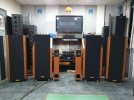
I took a leap of faith, went ahead and booked Grandiose. There is only so much that three hours of audition could tell us about them. I could associate the design principle of these speakers with every key-word that had intrigued me for the past two years – high-efficiency designs, 15”/18” woofers for bass, “horn-magic”, etc. I felt that I would have to continue my exploration and validate what I’ve read about these kind of designs when the speakers are home.
After that, with a heavy heart, I informed Sadik that the Faital 3WC-12 project had been called off. I really hope to work with him someday on some other project.
The Wait
At the time of booking, MJT had made it clear that he wouldn’t be able to commit to a timeline, due to the prevailing Covid-19 situation all over the world. We were in no hurry either because we already had a system in place to keep us happy. He told us that a few more components for the build would have to be imported. Shipping and customs would be taking longer than usual and he assured us that all this would be worth the wait. He also said that the work on cabinets would be getting started immediately.
In the meantime, I was planning for a parallel project to keep me busy. From the past two years, I have a rough idea about what all can go against the system hosted in our living room – “someone”, who shall remain unnamed, can crash into speakers while chasing a tennis ball, or “someone” can walk straight to the living room after bath, before drying and shake the water off in front of speakers, or “someone” can use speakers for backrest. First solution I thought of was to stitch a pair of upholstery protection covers for them. But these beauties deserve to be seen and appreciated, especially the impeccable woodwork. Since I was interested only in protecting the front panel, I decided to go for upholstery covers only for the same. The plan was to have straps with buckles stitched to the covers to fasten them in place. The covers could be made double layered and open at one end so that 3mm acrylic sheets can be inserted into them, for reinforcement.
Based on my limited understanding, this design is simple enough for a tailor. I even made a prototype out of paper, with all measurements clearly marked.
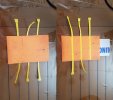
But finding a tailor for this job seemed to be impossible. I contacted many from the Commercial Street area and none of them showed interest. I even contacted a few organized players who have websites and accept orders online, with no luck. At last, I found my man in an upholstery shop near where I live. In about a month’s time, the covers were ready. Black acrylic sheets were procured from Maruthi Plastics at BVK Iyengar Road.
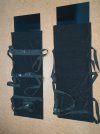
In about two months’ time, Torvin informed us that they had acquired all parts needed for the build and also sent us a pic of cabinets.
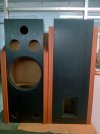
Following this, the second wave of Covid-19 kicked-in and Torvin factory had to be shut-down for weeks. They resumed operations in June and by mid-July, MJT sent me a few pics of the crossover. From the time I spent on TG’s website, I could recognize Premium Elko caps made by Jantzen Audio.
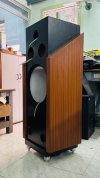
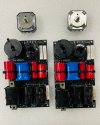
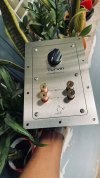

By August, we were informed that the final round of factory testing had begun. They also sent us a few pics of the finished speakers.
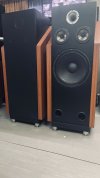
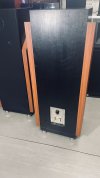
By October, after about 9 months of wait, the babies were ready to be shipped.
Shipping
While negotiating the price with Torvin, we had agreed that packing and shipping costs would be borne by us. Since Grandiose is a niche product that will only be sold in limited numbers, packing carton and thermocol sheets will only be manufactured as and when the need arises. The cheapest option was that Torvin will just do bubble wrapping and I could ferry them home in my car. These beasts could in no way fit in my humble hatch. After a few recent threads on this forum about shipping mishaps, I decided to leave no stone unturned when it comes to packing and shipping.
I requested Torvin to go for their top of the line packing, which consists of bubble wrap, thermocol specifically cut to complement speakers’ shape, carton box and additional corrugated cardboard sheet wraps, fastened with packing strips. I chose Agarwal Packers as the shipping partner. I requested Agarwal Packers for wooden crates and freight insurance, ideas I picked from this post. Soon, the budget for packing and shipping started to explode. The good thing about costs, and numbers in general, is that they can be manipulated to suite oneself. By dividing the shipping costs by the total project cost and multiplying by 100, I arrived at a convenient figure of 7.5% and consoled myself thinking that it was only going to be a small percentage of the project cost.
Seeing my paranoia MJT intervened a few days before our planned shipping date. He suggested that for the kind of money I was willing to spend, I can do away with crates altogether and make arrangements for a dedicated vehicle to ferry these beasts home, thereby saving some dough too in the process. Luckily, the rational side of my brain was still functional and I decided to pay heed. I went back to Agarwal Packers and after some negotiations, they agreed to arrange a dedicated, closed vehicle at the same cost that was initially quoted (minus that for the wooden crates). Thus, the pick-up and delivery would happen on the same day.
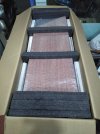
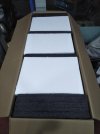

Finally, on a Monday morning, I heard news that the beasts were loaded onto the shipping vehicle and were on their way. I also heard a lot of nagging remarks from the crew after handling these beasts, each then weighing about 95kg+ after packing. It was a rainy day in Bangalore and add to that the Electronic City traffic, it was 9PM by the time the truck arrived. As we had anticipated, those buggers only sent a one-man army for unloading, who also doubled as the driver. Luckily, we had requested the security staff at our apartment for extra manpower and had also made arrangements for a high-capacity trolley. So, the unloading process went smooth and the beasts were finally home.

The routine lab-testing drill…
Setting-Up
When packing is bulletproof, unpacking becomes a nightmare. Getting rid of the corrugated cardboard sheet wrap itself took about an hour. My wife made a comment that I looked like the villain doing the vicious deed that started the war in Mahabharatha. Dragging these beasts out of carton boxes was another back breaking exercise.
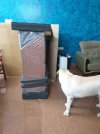
We came up with a strategy with minimum tilts and rolls to get the speakers to their final position. Luckily, these speakers came with feet already installed. Grandiose has two options for feet - either spikes or balls. We had chosen the latter as we were told they couple the speakers equally well to the floor as spikes and it also becomes convenient to slide the speakers on tiled floors. By around 2AM, the speakers were finally in place. Two tired souls sat by their side while our furry friend watched us in pity. There was also a small hill of cardboard, thermocol and plastic in our living room. Somewhere I have read that high-efficiency speakers are an audiophile’s answer to a greener planet. Looking at the amount of waste that got generated in the process of shipping, it looks like I am going to need at least two lifetimes to just break even. Please don’t buy speakers like these thinking that you are doing the planet a service.

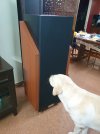
A word about the fit and finish of these: In Euphonious, the screws used to mount the drivers looks cheap and a few of them have started to rust. It could have been because I once used a moist cloth to wipe dust off them. Also the speaker grill guides have been fixed sloppily and the laminate have chipped off in a few corners. Euphonious was manufactured 6 years ago and the piece that was sold to us was the last one they had. So, probably they had underwent a lot of abuse before that. Compared to Euphonious, we were quite impressed with the quality of Grandiose (better be given the premium charged). Be it the quality of materials used like laminate, grill cloth, binding posts, screws, attenuator knobs, balled-feet, etc or the overall craftsmanship, everything is top notch in my opinion. These speakers are certainly built to last. However, given my eye for detail, only issues I could find was some shoddy paint job on the MDF that is exposed around the binding posts and a few scratches on the metal plates used to mount the binding posts. Something I can live with.
Initially, we set them up just like how our old speakers were, but now with limited clearance to their boundaries of course, and with slight toe-in. My room is a great example of an acoustically poor room. It is an L-shaped living + dining area, with a total carpet area of about 300 sq. feet and with 9 feet high ceiling. Front baffles of speakers are at about 2.5 feet from the front wall and at about 7 feet away from the listening position. We sit at about half feet away from the rear wall, accounting for the sofa’s backrest. There is a large French window to the left of the left speaker and the space to the right of the right speaker is open, the nearest room boundary being about 10 feet away. In summary, a symmetric speaker placement is out of question and seating options are limited. We got a large A/V rack made to house the TV and electronics. It has doors which were intended to protect electronics from dust and doors are made of glass to make using IR remotes possible. Back then, when we got the rack made, I wasn’t aware of acoustic effects that large glass panels can have when placed in between speakers. We are where we are and no point talking about it now. The clearance between the rack and side baffles is about 8.65 inches on both sides and that between the left speaker and the left wall is about 7.5 inches. In summary, all this will leave only a few inches in any direction to play with speaker placement and a few degrees for toeing in. The room is mostly reflective due to the tiled flooring. We have thin curtains for the French window and have added a carpet in due course to tame the room acoustics a bit.
Initial Impressions
Rest of the chain consisted of Raspberry Pi based Allo Katana Player, a streamer + DAC + pre-amp built into one unit, which is powered by Allo Shanti LPS for source. Speakers are driven by Tovin Mosfier II integrated amp. Content is mainly ripped/downloaded MP3/WAV/FLAC files stored on USB HDDs connected to Raspberry Pi using a powered USB hub and Spotify for streaming. Moode Audio has been installed as the playback and library management software and we control it using Moode's web interface. Speaker cables and interconnects are Mogami make. We connect the TV to the amp using its headphone output.
After setting up, we were left with no energy to enjoy music at 2AM that day. So, we just played a song to make sure that the speakers are fine, before going to bed. We resumed the next day and started with a Tamil playlist from 2000s. A minute into the first song and our furry friend got up and walked away. He has the most sensitive pair of ears at home and I got a feeling that something was not right.
To me, what was immediately apparent was that these speakers were too loud compared to Euphonious for the same volume setting, a hallmark of their sensitivity. I had to turn down the volume on Moode’s web interface by 7% to about 20% setting (the integrated amp’s volume is set to ~80%), so that we were able to have a comfortable conversation while music was still being played. Secondly, the light bass boom that used to cloud the overall presentation of Euphonious seemed to have disappeared. On paper, Euphonious is tuned to -6dB at 28Hz, while Grandiose is tuned to -3dB at 40Hz (in-room) and is also front-ported, unlike the former which is rear-ported. All this must have resulted in a better room integration. Third observation can be attributed to what some call the “horn-magic”. Every minute detail, however low it is relative to the mean volume of the music passage, was noticeable. Moreover, imaging was spot on. While I was lost in these apparent changes, my better half too walked away from the listening spot, a few songs later, saying that these speakers sounded too harsh compared to Euphonious.
After spending almost two and a half years with our previous system, I realized that I’m not an audiophile in any way. I would like to identify myself as more of a gearhead; always chasing exotic and unconventional stuff. I’m forgiving towards bad recordings and any other shortcomings in the presentation. The true audiophile at home turns out to be my better half. When it comes to observing the naturalness of sound, details, tonality or any changes following a component upgrade, she is a natural, and my go to person at home. I often need more time and effort to arrive at the same conclusion as hers.
For a change, we tried playing some movies on Netlifx to see how the system fares. We were baffled by the fact that sounds like chairs falling, glass breaking, water gushing, rain, waves hitting the shore, of birds and animals, etc felt so natural. Even minute details in the background score, that otherwise go unnoticed, were distinct and dialogues were more engaging. However, my better half still felt the overall presentation to be harsh. The cost and room presence of these speakers have set the bar very high for them and I realized that I would need to do a lot more work to make them enjoyable.
First thing I tried to do was to reset the toe-in, so that the speakers are now firing straight. My wife immediately noticed that the harshness toned down quite a lot. Next thing to play with was the HF attenuator setting. I had initially set the attenuator’s knob at 50% position. At 0%, the CD is practically turned-off, and we can hear an exaggerated version of how a dry sounding system sounds like. At 100%, the system becomes unbearable to listen due to excessive brightness. Next position I tried was 25% and my wife’s face brightened a bit. After listening to a couple of tracks, she said that the system sounded much better but still nothing compared to Euphonious. I am sure that she swallowed many not so sweet words about our new acquisition and my part in it.
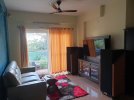
Next right thing to do was to give MJT a ring. While I was explaining our predicament, he remained calm and replied that he was expecting this kind of feedback from us initially. He was aware that we had not been exposed to a lot many systems before and our only reference was a system from his own stable, based on Euphonious speakers, and that we have been living with them for almost two and a half years. He told us that Euphonious has been specifically voiced to the liking of the majority of his customer base, though he himself is not a fan of this kind of voicing. In audiophile terms, would warm and smooth sounding be the right word? Grandiose has been tuned to sound relatively natural and thus he advised us to wait for a few of days for our ears to get accustomed to this kind of presentation. As for the harshness, like I have already read on TG’s website, MJT said that the drivers on these were new and would be needing some time to burn-in. And these being PA drivers, we can expect anything between 100 to 200 hours, especially for woofers. CDs too would start sounding mellow after burn-in, he assured. Until then, his advice was to back-off the attenuator by another 5-10%, depending on our comfort zone. He also gave suggestions about swapping speaker cables, but I thought we’d wait for drivers to burn-in first.
At about an hour of music a day and counting a few extra hours during weekends for movies, we are talking about a time frame of 6 months or so here. Thus began our next long wait.
A note of thanks:
What you have been reading has been compiled from the notes I made during the journey which started about three years ago. Special thanks to mod Arjun (@arj ) and supermod (@HiFiVision ) for temporarily increasing the character count limit to 80k characters/post. As suggested by Arjun, I'm breaking the post into two for readability.
Coming up next are our experiments with speaker placements, power conditioning, cable upgrades, source upgrades, and later impressions on sound. Stay tuned!
Thanks for reading! To be continued...
With regards,
Sandeep Sasi
I have always been attracted to the sheer size and room presence of large, vintage-looking speakers. Shortly after we acquired our system (a log of our journey can be read here), I began reading up on these kind of speakers. In the process I learnt about Hofmann’s Iron Laws of speaker design, high-efficiency speakers and horn systems. The more I researched about them and the more I learnt about their strengths, the more I wanted to have them. It was not that our existing system was not good. It was just a desire to own and experience something different and unconventional by today’s standards.
Since our existing system was Torvin make, the natural course of action was to go back to them. At that time, Torvin had only one model in their portfolio, The Project 1, (which has briefly come up during discussions on the forum) - a pair of large 2-way speakers based on 18” woofers mated to horn-loaded compression drivers. I only made a brief enquiry about them, back then. Those are too huge to even physically accommodate in our listening space.
Shortly after posting the thread about our system, I received a few messages asking, “Why Torvin?” I shall try to answer that here for the benefit of a larger audience. This is because, I also look at things beyond sound. I also look at sound-for-pound (or price-to-performance) and quality for the price.
Note: What I’m going to state below is just based on my understanding and assumes a buyer in India. By all means, please feel free to disagree or look at the flipside of things that I’ll have overlooked.
When we break down the cost of procuring a hi-fi system or a component from a famous brand having presence across countries, in addition to engineering and manufacturing costs, we are also indirectly paying for various other operating costs of the company like ads in websites and magazines, setting-up showrooms in cities, attending trade shows, etc and of course profits. Many a time, the cost advantages these brands enjoy from large volumes and cheaper and more efficient manufacturing do not get passed on to end customers. When these products are brought to India, customs duty and taxes are levied. Finally, these products are sold by distributers and dealers operating on fat margins (as always, there are exceptions). I don’t mind paying for good engineering, hardware, craftsmanship, packaging, transport, taxes at reasonable rates, and of course a fair premium to the manufacturer; but, not for anything else.
There are inherent advantages of buying directly from boutique brands based in India – they have low operating costs and we have to deal with few middle-men – the customs being one, distributors and dealers being another. Torvin looks like a boutique brand to me, so I went to Torvin. Another advantage is that we get to work closely with designers and craftsmen and even get products tuned and customized to our liking. Moreover, warranty and service won’t usually be a concern.
But not everything will be all sunshine and rainbows. Products from indigenous boutique brands have less to no resale value. Fit and finish can sometimes be a hit-or-miss. All information about their products may not be readily available online and we hardly come across any professional reviews of their products. These brands may have no websites or if at all they have one, the info may not be updated regularly. Auditioning of their products may be possible only in their home cities. They may not have a process in place for all aspects of operations and things in general may not look well organized. There may only be one or two key folks running the show and their momentary absence is enough for everything to come to a standstill.
Another speaker model I considered was Horn Grande (the ported bass cabinet version) made by Lyrita Audio. I had a brief interaction with Viren Bakshi (FM @viren bakhshi ) of Lyrita over e-mail and he insisted that more than a particular kind of speaker, the amp-speaker synergy will play a greater role in deciding how the system would perform. Lyrita horns work well with their tube-based amps and it will be difficult for us to host tube amps in our A/V cabinet at home. I also have concerns about these speakers sounding coherent at the listening spot, given our short listening distance and large horns they come with.
Project 1 and Horn Grande being out of the picture, I thought I’d take things one step further this time. Instead of buying from a boutique brand, I could either design one myself or pick a proven design and get it built. My intent was not to save cost here but to get even better speakers for the money. I am an electronics engineer with no intention to pursue speaker design as a hobby. I knew it’d take several years and builds to get a proper sounding pair. The former option was struck down immediately and I decided to pursue the latter idea.
Thus began my hunt for a well-documented, high-efficiency design, with all parts readily available. After a lot of search online, I landed on Troels Gravesen’s (TG’s) homepage. He has well-documented builds of various kinds of speakers. Out of these, one design that picked my interest was the Faital 3-Way Classic (Faital 3WC-12) - a high-efficiency 3-way design based on 12” Faital Pro woofers and 6” Faital Pro mid-range drivers (only the version based on 12” woofers existed at that time; now there are versions based on 10” and 15” woofers as well). It had everything I was looking for except for horn-loaded transducers for HF; instead, it had tweeters. For tweeters, there are two choices – fabric-dome tweeters from Scanspeak or Beryllium (Be) tweeters from SB Acoustics. There are also multiple levels of build, Level 1 being the most expensive as it uses crossover parts of the highest quality from Jantzen Audio, Denmark. I started exchanging e-mails with TG with questions about the build. I was surprised by the fact that he responds within a day or two, with answers that are precise and concise. Though he recommended to go for the Be version, I decided to stick to the fabric-dome version at that time as it seemed to give more bang for the buck. I also discussed with a few people on diyaudio.com who have built these speakers and they had nothing but praise for them.
Next big task was to estimate the total project cost. TG doesn’t disclose the crossover values on his website. Instead he publishes price-lists for each combination of version and level of his builds. For the combination we have chosen, we have to purchase the crossover kit from Jantzen Audio and crossover values will be disclosed in the kit. As for the cost, we also need to factor in shipping and customs charges. For the Faital 3WC-12 build, woofers and midrange drives will have to be purchased separately. Tweeters can optionally be purchased from Jantzen Audio as a part of the kit. Faital Pro has dealers in Delhi and Chennai. I got a quote for the cost of drivers from the Delhi dealer. Only unknowns at that time were the cost of raw materials, labor, final packing and shipping charges. I threw in reasonable estimates and there I was already looking at a fat budget. I immediately added this project to my short-term financial goals and started saving for the same. Based on my estimate and saving rate back then, and assuming an annual inflation of 10%, the goal seemed to be at least 4-5 years away.
Next, I needed a partner to carry out the build. Though it looked like a five year plan, I always like to knock-off the unknowns quickly and I believe in planning things well in advance. To handle a premium build like this, I would trust no one but the legendary speaker designer and builder, Sadik (FM @sadik ). I sent him a private message about the plan and he was quick to respond with a well tabulated break-up of the costs involved, for parts and labor. The cost was more or less in the ballpark of my estimate. And thus began the long wait for the corpus to grow to the desired size.
In the meantime, a new line of audiophile speakers from Torvin surfaced on their social media pages, to mark their 39th year in the field. I was particularly attracted towards one model – Grandiose – a pair of high-efficiency 3-way towers based on 15” woofers, dual mid-range drivers and horn-loaded compression drivers. I made a casual enquiry about the model but Faital 3WC-12 had already won my heart.

The Prodigal Son
The year 2020 had different plans for many of us.
Covid-19 outbreak happened.
Since the Faital 3WC-12 project was a non-critical financial goal of mine, I was taking advantage of the equity market swings, hoping to reach the goal faster (my style is to stay away from equity for critical financial goals which are less than 10 years away; I find it hard to manage the risk, otherwise). In 2020, I witnessed the equity market fall by 35% and then recover with vengeance. While most of our plans had to be called off during this year, the stock market had me covered on this one. The bull run which started back then still continues to this day, unabated (as I write this). Thus the project would be turning into reality sooner than expected.
In the meantime, the Faital Pro factory in Italy shut down and Faital Pro drivers went out of stock everywhere. The dealer in Delhi had no idea when he’d be in a position to accept new orders.
My mind started swaying between the fabric-dome version and the Be version of the Faital 3WC-12. Projects like this don’t happen often and my heart was craving to go for the best, given the time and effort spent. I consulted with Sadik and his recommendation for Be tweeters was only enough for me to swing towards the Be version (this will automatically select Level 1 build). And, up went the project cost. Considering customs charges, I realized that it would be cheaper to purchase the Be tweeters from audiofy.in website. This particular model had been out of stock on audiofy.in for a long time (I had never seen these in stock there in the first place).
As on the government’s part, the import duty shot up from ~45% to ~75%, increasing the project cost further.
I had been going through TG’s website to collect as much details about the build as I could. Everything he does, however inconsequential it may appear at first, seems to have a rationale behind it. All info cannot be gathered from a single thread on a particular build. Bits and pieces have to be collected from multiple build threads and then put together. There are also invaluable technical write-ups on many related topics. I created a Word doc to consolidate all info, both as pics and literature, so that I can finally present a concise description to Sadik, before starting the build. The doc was already running into more than 50 pages. I am not sure whether this level of attention to detail is really necessary, or whether it would even make any audible difference to me. My paranoia was keeping me up late into the night. Making notes. Updating the budget. Modifying the plan and timelines. Soon, my wife started to get worried.
Meanwhile, my in-laws informed us that they would be finishing their new house the following year. I thought we can make use of this opportunity to gift them a hi-fi system. Speakers we had then, Torvin Euphonious, would be a good candidate for their listening space. Moreover, I wasn’t really interested in parting with Euphonious for sentimental reasons.
Also, during this period, the responsibilities at work sky-rocketed. Working from home was a whole new experience for many of us. I got busier, and realized that I’d be having less time to spare to oversee the project.
Ultimately, I started to get a feeling that with so much uncertainty around the availability of drivers, with the level of details that were overwhelming (in spite of the fact that most of the heavy lifting would be done by Sadik) and with the amount of time and effort needed in coordinating activities, I may not be able to carry the Faital 3WC-12 project forward. Also, after the increase in customs duty and the shift towards the Be version, I felt that Faital 3WC-12 was gradually losing on the sound-for-pound side.
Meanwhile, more pics and videos of Grandiose emerged on Torvin’s social media pages. One day, I gave into the temptation and made an enquiry, a formal one this time, about the prevailing price and technical specs. With the rise in costs of import and manpower, I was expecting a stratospheric quote from them. Surprisingly, after a bit of discussion, they agreed on a price that seemed quite acceptable to me. It could have been the pressure on their business after the pandemic because I have never been good at price negotiations. I also learnt that they had a couple of orders for this model, back in 2019, which later got cancelled after the onset of Covid-19. However, they had already imported drivers and a few components to fulfil these orders, and this must make the next couple of orders for this model immune to the rise in import duty to some extent.
For technical info, I started interacting with M. John Thankachan (MJT) or Thankachan Sir as I fondly call him, the chief designer at and whose brainchild is Torvin. He is a soft-spoken, mild-mannered gentleman whose humbleness overshadows his technical prowess, vast knowledge, and experience in the audio field.
Grandiose (or Grandiose 15.3 to be specific) is a pair of high-efficiency 3-way towers based on 15” Electro-Voice woofers, 5.25” Peerless dual mid-range drivers and 1” Faital Pro compression drivers (CDs). CDs are horn-loaded and the horns made of solid Aluminium have been custom designed by Torvin. These speakers make use of bass reflex design and have dual front-firing ports. Cabinets have a heavily braced structure and are built from a mix of 1” MDF sheets and solid wood and then finished in laminate. Cross over components, internal wiring and binding posts are of high quality, both Indian and imported. These speakers have attenuators for the HF section and come with magnetic grills. Given their high sensitivity, MJT recommends pairing them with amps capable of comfortably delivering a meagre 5W into 4 Ohms, to attain reasonable listening levels in medium-sized rooms.
Only thing I don’t like about them is that Torvin hasn’t published any measurements or graphs. I decided to go ahead anyway because I trust MJT’s ears more than mine and these speakers are said to have a good synergy with my existing amp, Torvin Mosfier II.
I immediately realized that the advantages of going for Grandiose were manifold:
- On paper, the cost of acquiring Grandiose worked out to be the same as that of getting Faital 3WC-12 built. Cost, in this context, covers the base cost of speakers, audition expenses, cost of packaging, transport and misc. costs (only estimates), if any, for both options. From the two years I spent reading up on speaker building, I was able to estimate the cost break-up of Grandiose. I felt that the premium charged by Torvin was acceptable and the price was reasonable (in no way can these be called cheap). Had it been me in Torvin’s place, I’d be charging at least double the premium for my time and effort.
- The model of the amp which we have already, Torvin Mosfier II, along with other tube-based amps from Torvin’s own stable and also high-end amps from other brands, were extensively used to fine-tune these speakers during their development. So, synergy with our existing amp is guaranteed; the main reason why I wasn’t too worried about measurements.
- More importantly, before booking them, we’d get to see and listen to these speakers, in flesh and blood, with the same pairing as ours.
- MJT’s own taste in music – Malayalam, Tamil and Hindi movie soundtracks from the pre-2000 era – matches well with ours and so, there was a fair chance that the voicing of these speakers would be to our liking.
- We won’t have to go through the hassles of acquiring parts, dealing with courier and customs, coordinating various activities during the build, etc, if we were to go down this path.
- Torvin offers 10 years of warranty for these. More than warranty, the fact that MJT is always a phone call away is a matter of great relief.
- Lack of published measurements and I have already covered that.
- I was worried that these speakers would be sitting too close to the room boundaries in my listening space and also about their bass integration with the room. The former limitation and its associated side-effects is something we’ll have to live with. We were already experiencing a slight bass boom with Euphonious, at higher volumes. MJT assured that bass would never be an issue with these. He was actually more concerned about highs, given our relatively short listening distance (more on this later). Don’t get mislead by large 15” woofers in these speakers. In-room response is only ~40Hz. When it comes to LF extension, any decent sub will have them for breakfast. But, to quote TG, “I'd like to see you choose between a 12" going to 50 Hz and a 6" doing 35 Hz.”
- Their size and room presence would be a little more than what I had wished for. To be honest, I knew they’d be an eyesore in my living room. Lucky for me, WAF isn’t an issue. I have a supportive spouse.
The Audition
Last time, when I visited Torvin’s office to audition our previous system, my better half had only one complaint – I did not take her along with me. This time, I decided to tag her along. In fact, I felt that her presence would be more important this time as I had started to trust her ears more than mine. We booked a cab to Chennai, as we felt that flights or trains were not the best options for social distancing. We arrived at Seeyaliamman Koil Street, where Torvin is located, by noon. The crowd there reminded us about Commercial Street in Bangalore during pre-Covid times. So much for social distancing.
At Torvin’s place, MJT had already got the system ready to sing. Torvin has a well-endowed listening room at their place. Only thing I didn’t like about the arrangement that day was how Grandiose were placed – too close to each other and with several other pairs of speakers in the vicinity. I was able to identify a pair from Torvin’s social media pages - Canorous – a pair of 5-way towers. I was also a bit worried that MJT would be using one of his McIntosh amps for audition, like I have usually seen on their social media pages, which may leave a wrong impression about how Grandiose would sound when paired with our amp. But, the amp set-up for the demo was the same model as ours, Torvin Mosfier II. MJT was having a Pioneer CD player as the source. We were carrying a few CDs along with us – mostly Hindi and Tamil movie soundtracks from 90’s and 00’s. I don’t have many CDs with me in Bangalore as I have ripped most of them and have copied contents to HDDs.
We started with songs from Dil Se. Details were very apparent from the beginning and the overall presentation seemed quite good to me. We then played several tracks from Lagaan, Dhadkhan, Asoka, Roja (Tamil version; the CD was loaned by MJT), some Indian folk music, Malayalam movie songs, English pop and even trance. One thing I really like about MJT is that he never judges us by our choice of music. To each his own. He also said that these speakers would equally fare well for movies as for music, something that we’d be using them for, after all.
Every time I looked at my wife during the audition, I could see a lot of confusion on her face. I understood what was going on. She was expecting that these speakers would let us relive the wow moment we experienced when we set-up our previous system for the first time in our living room. I had been exposed to humble hi-fi set-ups before that, but for my wife, who had only listened to music on stock TV speakers or the like all her life, it was a moment of revelation of how music can also sound like. We spent all that day listening to music. Now, there we were to audition speakers costing ~4x than Euphonious (after accounting for inflation), roughly 2x bigger and having 4 pairs drivers, and of which 2 were oddly looking. All this should result in at least 4x the wow factor, no? Well, this is what happens when we go well past the diminishing returns curve. Every doubling of cost may bring-in only incremental gains, if any at all. I was trying my best to draw her attention towards details in the presentation that were quite apparent to me. However, we can safely conclude here that during the audition, my better half was not much impressed with Grandiose. Also, to her, these speakers sounded a bit harsh. Grandiose come with HF attenuators and MJT made some adjustments to the attenuator settings and the harshness toned down a bit.
Then we moved on to listen to Canorous. MJT hinted that these could sound similar to the familiar smooth presentation of Euphonious. My wife too agreed. These are also relatively cheaper than Grandiose. But the engineering side of my brain was not ready to budge. Based on my understanding, a 5-way design will have to be crossed at four different points in the frequency spectrum. This calls for five frequency selective filters, of which three have to be band-pass and possibly of high order. High order means more component count. Given the finite cost that has to be divided among 5 pairs of drivers and relatively more crossover components, quality will have to be compromised to some extent. Any engineering decision is a compromise, one way or the other. Moreover, from what I have seen and understood, multiway designs may have a bumpy impedance response, impedance dips, high power-factor at certain frequencies and power-hungry crossovers. I felt that if we go for them, then soon we’d have to start another upgrade cycle for the amplifier. MJT too agreed that it’s going take an amp much more powerful than the Mosfier II to get Canorous to sing.
We also demoed a small full ranger as it was also present in the demo room. The emphasis was mainly on the mid-range and both of us did not like them.

I took a leap of faith, went ahead and booked Grandiose. There is only so much that three hours of audition could tell us about them. I could associate the design principle of these speakers with every key-word that had intrigued me for the past two years – high-efficiency designs, 15”/18” woofers for bass, “horn-magic”, etc. I felt that I would have to continue my exploration and validate what I’ve read about these kind of designs when the speakers are home.
After that, with a heavy heart, I informed Sadik that the Faital 3WC-12 project had been called off. I really hope to work with him someday on some other project.
The Wait
At the time of booking, MJT had made it clear that he wouldn’t be able to commit to a timeline, due to the prevailing Covid-19 situation all over the world. We were in no hurry either because we already had a system in place to keep us happy. He told us that a few more components for the build would have to be imported. Shipping and customs would be taking longer than usual and he assured us that all this would be worth the wait. He also said that the work on cabinets would be getting started immediately.
In the meantime, I was planning for a parallel project to keep me busy. From the past two years, I have a rough idea about what all can go against the system hosted in our living room – “someone”, who shall remain unnamed, can crash into speakers while chasing a tennis ball, or “someone” can walk straight to the living room after bath, before drying and shake the water off in front of speakers, or “someone” can use speakers for backrest. First solution I thought of was to stitch a pair of upholstery protection covers for them. But these beauties deserve to be seen and appreciated, especially the impeccable woodwork. Since I was interested only in protecting the front panel, I decided to go for upholstery covers only for the same. The plan was to have straps with buckles stitched to the covers to fasten them in place. The covers could be made double layered and open at one end so that 3mm acrylic sheets can be inserted into them, for reinforcement.
Based on my limited understanding, this design is simple enough for a tailor. I even made a prototype out of paper, with all measurements clearly marked.

But finding a tailor for this job seemed to be impossible. I contacted many from the Commercial Street area and none of them showed interest. I even contacted a few organized players who have websites and accept orders online, with no luck. At last, I found my man in an upholstery shop near where I live. In about a month’s time, the covers were ready. Black acrylic sheets were procured from Maruthi Plastics at BVK Iyengar Road.

In about two months’ time, Torvin informed us that they had acquired all parts needed for the build and also sent us a pic of cabinets.

Following this, the second wave of Covid-19 kicked-in and Torvin factory had to be shut-down for weeks. They resumed operations in June and by mid-July, MJT sent me a few pics of the crossover. From the time I spent on TG’s website, I could recognize Premium Elko caps made by Jantzen Audio.




By August, we were informed that the final round of factory testing had begun. They also sent us a few pics of the finished speakers.


By October, after about 9 months of wait, the babies were ready to be shipped.
Shipping
While negotiating the price with Torvin, we had agreed that packing and shipping costs would be borne by us. Since Grandiose is a niche product that will only be sold in limited numbers, packing carton and thermocol sheets will only be manufactured as and when the need arises. The cheapest option was that Torvin will just do bubble wrapping and I could ferry them home in my car. These beasts could in no way fit in my humble hatch. After a few recent threads on this forum about shipping mishaps, I decided to leave no stone unturned when it comes to packing and shipping.
I requested Torvin to go for their top of the line packing, which consists of bubble wrap, thermocol specifically cut to complement speakers’ shape, carton box and additional corrugated cardboard sheet wraps, fastened with packing strips. I chose Agarwal Packers as the shipping partner. I requested Agarwal Packers for wooden crates and freight insurance, ideas I picked from this post. Soon, the budget for packing and shipping started to explode. The good thing about costs, and numbers in general, is that they can be manipulated to suite oneself. By dividing the shipping costs by the total project cost and multiplying by 100, I arrived at a convenient figure of 7.5% and consoled myself thinking that it was only going to be a small percentage of the project cost.
Seeing my paranoia MJT intervened a few days before our planned shipping date. He suggested that for the kind of money I was willing to spend, I can do away with crates altogether and make arrangements for a dedicated vehicle to ferry these beasts home, thereby saving some dough too in the process. Luckily, the rational side of my brain was still functional and I decided to pay heed. I went back to Agarwal Packers and after some negotiations, they agreed to arrange a dedicated, closed vehicle at the same cost that was initially quoted (minus that for the wooden crates). Thus, the pick-up and delivery would happen on the same day.



Finally, on a Monday morning, I heard news that the beasts were loaded onto the shipping vehicle and were on their way. I also heard a lot of nagging remarks from the crew after handling these beasts, each then weighing about 95kg+ after packing. It was a rainy day in Bangalore and add to that the Electronic City traffic, it was 9PM by the time the truck arrived. As we had anticipated, those buggers only sent a one-man army for unloading, who also doubled as the driver. Luckily, we had requested the security staff at our apartment for extra manpower and had also made arrangements for a high-capacity trolley. So, the unloading process went smooth and the beasts were finally home.

The routine lab-testing drill…
Setting-Up
When packing is bulletproof, unpacking becomes a nightmare. Getting rid of the corrugated cardboard sheet wrap itself took about an hour. My wife made a comment that I looked like the villain doing the vicious deed that started the war in Mahabharatha. Dragging these beasts out of carton boxes was another back breaking exercise.

We came up with a strategy with minimum tilts and rolls to get the speakers to their final position. Luckily, these speakers came with feet already installed. Grandiose has two options for feet - either spikes or balls. We had chosen the latter as we were told they couple the speakers equally well to the floor as spikes and it also becomes convenient to slide the speakers on tiled floors. By around 2AM, the speakers were finally in place. Two tired souls sat by their side while our furry friend watched us in pity. There was also a small hill of cardboard, thermocol and plastic in our living room. Somewhere I have read that high-efficiency speakers are an audiophile’s answer to a greener planet. Looking at the amount of waste that got generated in the process of shipping, it looks like I am going to need at least two lifetimes to just break even. Please don’t buy speakers like these thinking that you are doing the planet a service.


A word about the fit and finish of these: In Euphonious, the screws used to mount the drivers looks cheap and a few of them have started to rust. It could have been because I once used a moist cloth to wipe dust off them. Also the speaker grill guides have been fixed sloppily and the laminate have chipped off in a few corners. Euphonious was manufactured 6 years ago and the piece that was sold to us was the last one they had. So, probably they had underwent a lot of abuse before that. Compared to Euphonious, we were quite impressed with the quality of Grandiose (better be given the premium charged). Be it the quality of materials used like laminate, grill cloth, binding posts, screws, attenuator knobs, balled-feet, etc or the overall craftsmanship, everything is top notch in my opinion. These speakers are certainly built to last. However, given my eye for detail, only issues I could find was some shoddy paint job on the MDF that is exposed around the binding posts and a few scratches on the metal plates used to mount the binding posts. Something I can live with.
Initially, we set them up just like how our old speakers were, but now with limited clearance to their boundaries of course, and with slight toe-in. My room is a great example of an acoustically poor room. It is an L-shaped living + dining area, with a total carpet area of about 300 sq. feet and with 9 feet high ceiling. Front baffles of speakers are at about 2.5 feet from the front wall and at about 7 feet away from the listening position. We sit at about half feet away from the rear wall, accounting for the sofa’s backrest. There is a large French window to the left of the left speaker and the space to the right of the right speaker is open, the nearest room boundary being about 10 feet away. In summary, a symmetric speaker placement is out of question and seating options are limited. We got a large A/V rack made to house the TV and electronics. It has doors which were intended to protect electronics from dust and doors are made of glass to make using IR remotes possible. Back then, when we got the rack made, I wasn’t aware of acoustic effects that large glass panels can have when placed in between speakers. We are where we are and no point talking about it now. The clearance between the rack and side baffles is about 8.65 inches on both sides and that between the left speaker and the left wall is about 7.5 inches. In summary, all this will leave only a few inches in any direction to play with speaker placement and a few degrees for toeing in. The room is mostly reflective due to the tiled flooring. We have thin curtains for the French window and have added a carpet in due course to tame the room acoustics a bit.
Initial Impressions
Rest of the chain consisted of Raspberry Pi based Allo Katana Player, a streamer + DAC + pre-amp built into one unit, which is powered by Allo Shanti LPS for source. Speakers are driven by Tovin Mosfier II integrated amp. Content is mainly ripped/downloaded MP3/WAV/FLAC files stored on USB HDDs connected to Raspberry Pi using a powered USB hub and Spotify for streaming. Moode Audio has been installed as the playback and library management software and we control it using Moode's web interface. Speaker cables and interconnects are Mogami make. We connect the TV to the amp using its headphone output.
After setting up, we were left with no energy to enjoy music at 2AM that day. So, we just played a song to make sure that the speakers are fine, before going to bed. We resumed the next day and started with a Tamil playlist from 2000s. A minute into the first song and our furry friend got up and walked away. He has the most sensitive pair of ears at home and I got a feeling that something was not right.
To me, what was immediately apparent was that these speakers were too loud compared to Euphonious for the same volume setting, a hallmark of their sensitivity. I had to turn down the volume on Moode’s web interface by 7% to about 20% setting (the integrated amp’s volume is set to ~80%), so that we were able to have a comfortable conversation while music was still being played. Secondly, the light bass boom that used to cloud the overall presentation of Euphonious seemed to have disappeared. On paper, Euphonious is tuned to -6dB at 28Hz, while Grandiose is tuned to -3dB at 40Hz (in-room) and is also front-ported, unlike the former which is rear-ported. All this must have resulted in a better room integration. Third observation can be attributed to what some call the “horn-magic”. Every minute detail, however low it is relative to the mean volume of the music passage, was noticeable. Moreover, imaging was spot on. While I was lost in these apparent changes, my better half too walked away from the listening spot, a few songs later, saying that these speakers sounded too harsh compared to Euphonious.
After spending almost two and a half years with our previous system, I realized that I’m not an audiophile in any way. I would like to identify myself as more of a gearhead; always chasing exotic and unconventional stuff. I’m forgiving towards bad recordings and any other shortcomings in the presentation. The true audiophile at home turns out to be my better half. When it comes to observing the naturalness of sound, details, tonality or any changes following a component upgrade, she is a natural, and my go to person at home. I often need more time and effort to arrive at the same conclusion as hers.
For a change, we tried playing some movies on Netlifx to see how the system fares. We were baffled by the fact that sounds like chairs falling, glass breaking, water gushing, rain, waves hitting the shore, of birds and animals, etc felt so natural. Even minute details in the background score, that otherwise go unnoticed, were distinct and dialogues were more engaging. However, my better half still felt the overall presentation to be harsh. The cost and room presence of these speakers have set the bar very high for them and I realized that I would need to do a lot more work to make them enjoyable.
First thing I tried to do was to reset the toe-in, so that the speakers are now firing straight. My wife immediately noticed that the harshness toned down quite a lot. Next thing to play with was the HF attenuator setting. I had initially set the attenuator’s knob at 50% position. At 0%, the CD is practically turned-off, and we can hear an exaggerated version of how a dry sounding system sounds like. At 100%, the system becomes unbearable to listen due to excessive brightness. Next position I tried was 25% and my wife’s face brightened a bit. After listening to a couple of tracks, she said that the system sounded much better but still nothing compared to Euphonious. I am sure that she swallowed many not so sweet words about our new acquisition and my part in it.

Next right thing to do was to give MJT a ring. While I was explaining our predicament, he remained calm and replied that he was expecting this kind of feedback from us initially. He was aware that we had not been exposed to a lot many systems before and our only reference was a system from his own stable, based on Euphonious speakers, and that we have been living with them for almost two and a half years. He told us that Euphonious has been specifically voiced to the liking of the majority of his customer base, though he himself is not a fan of this kind of voicing. In audiophile terms, would warm and smooth sounding be the right word? Grandiose has been tuned to sound relatively natural and thus he advised us to wait for a few of days for our ears to get accustomed to this kind of presentation. As for the harshness, like I have already read on TG’s website, MJT said that the drivers on these were new and would be needing some time to burn-in. And these being PA drivers, we can expect anything between 100 to 200 hours, especially for woofers. CDs too would start sounding mellow after burn-in, he assured. Until then, his advice was to back-off the attenuator by another 5-10%, depending on our comfort zone. He also gave suggestions about swapping speaker cables, but I thought we’d wait for drivers to burn-in first.
At about an hour of music a day and counting a few extra hours during weekends for movies, we are talking about a time frame of 6 months or so here. Thus began our next long wait.
A note of thanks:
What you have been reading has been compiled from the notes I made during the journey which started about three years ago. Special thanks to mod Arjun (@arj ) and supermod (@HiFiVision ) for temporarily increasing the character count limit to 80k characters/post. As suggested by Arjun, I'm breaking the post into two for readability.
Coming up next are our experiments with speaker placements, power conditioning, cable upgrades, source upgrades, and later impressions on sound. Stay tuned!
Thanks for reading! To be continued...
With regards,
Sandeep Sasi
Last edited:



